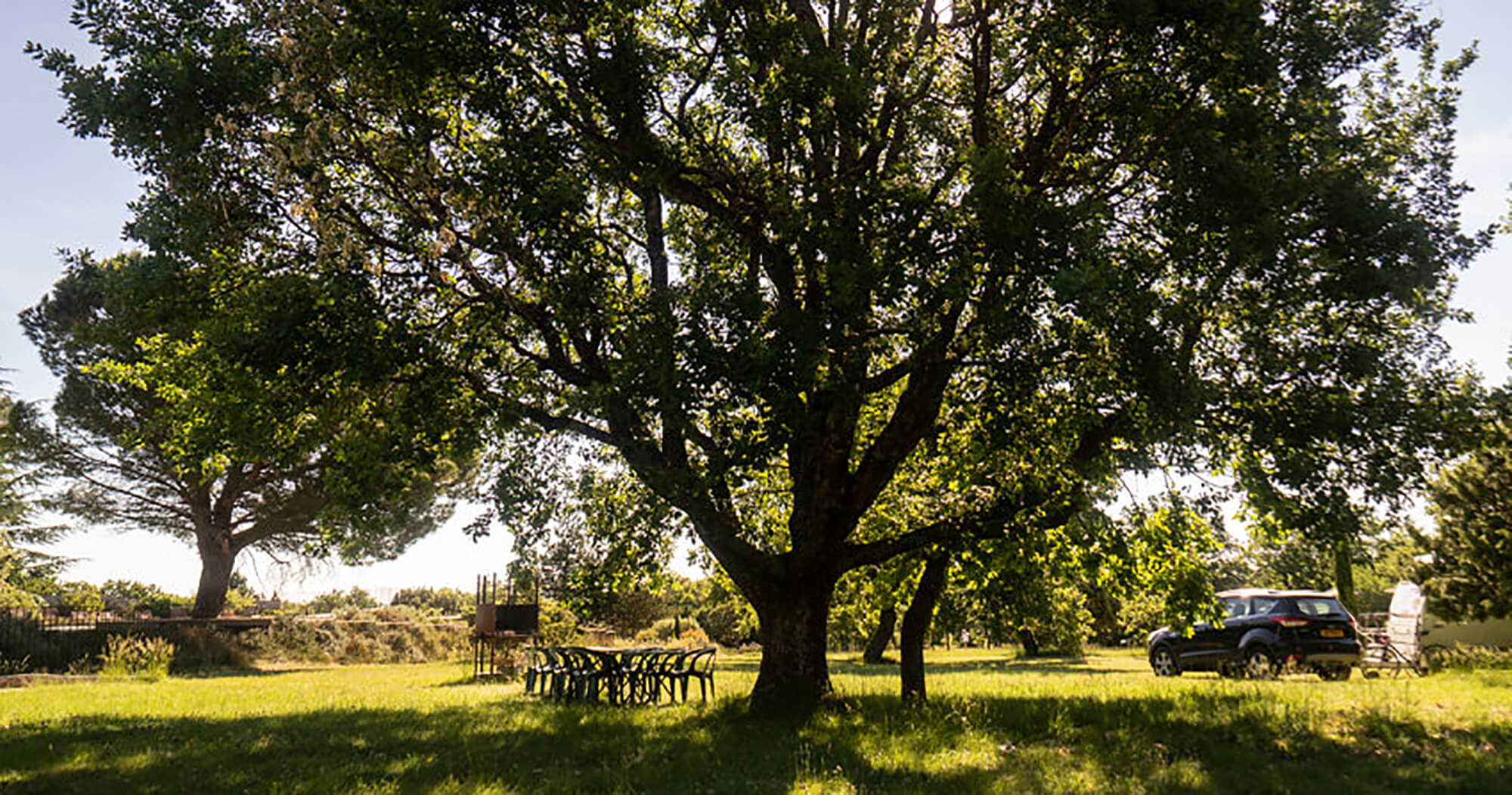Emblematic trees of the campsite, the oaks really give our place its identity. A whole life swarms around these majestic trees, these are some characteristic inhabitants.
Did you know? An oak can easily live for more than 300 years, and sometimes even reach 1000 years.
The oaks on the campsite
Pubescent oak – Quercus pubescens
You’ll recognise it by its typical rounded leaves. In the region, it is known as the white oak because it resembles Quercus alba, the American white oak. It is the most common on the campsite.
Holm oak – Quercus ilex
This is the greenest of the oaks; it keeps its leaves all year round, which i why it is also calles the green oak. It is very common in the garrigue (see panel “Mediterranean open and semi-open areas”).
Kermes oak – Quercus coccifera
This is the most prickly of the oaks. You’ll recognise its holly-like leaves. Like the holm oak, it is typical of the garrigue and does not lose its leaves in winter.
Did you know? Acorns are rich in starch and may have been eaten by humans in times of famine. However, its tannins and bitterness need to be removed before it can be made into flour or puree. In the past, pigs were taken into the forest to eat acorns. This widespread activity was regulated or taxed.
Six species living around oaks
Oak gall
The oak tree forms a gall to protect itself from the larvae of Andricus kollari, or gall wasps, which burrow under its bark. The gall is green in spring and turns wood-coloured in August, when it matures. At that point, you’ll be able to spot a small hole. This is where the larva, which has metamorphosed into an adult, has dug a passageway to escape. Oak gall, which is very rich in tannins, was once used as a dye to tan leather and to make black ink.
Green oak leafroller – Tortrix viridina
This caterpillar feeds on the tender, rich buds and fresh leaves of the oak tree, growing rapidly. It then wraps itself around a beautiful leaf – hence its name – to pupate and become a small green moth. To protect itself, the tree tends to bud later than its neighbours or to make several waves so that only the first buds are eaten.
Red-capped scaber stalk – Leccinum quercinum
With its long filaments, this fungus spreads through the soil and forms a network called mycelium. It lives in symbiosis with oak trees: after capturing water and numerous nutrients and minerals, it exchanges these resources with the oak tree for other nutrients that it itself needs. It’s a win-win situation!
Great spotted Woodpecker – Dendrocopos major
The spotted woodpecker can be recognised by its black and white striped plumage and the red spot on its lower abdomen near its tail. By burrowing into the wound of a fallen branch, it cleans the wound and protects the oak from infection and attack. This bird feeds on wood-eating insects, such as the larvae of the lesser capricorn beetle, which it can catch with its 10 cm-long tongue.
Acorn Jay – Garrulus glandarius
This bird has a brown body with black and white plumage. It can be recognised by its bright blue and black striped wings. It is one of the rare species of bird that hoards: in autumn, it stores food for the winter and the following spring. A single jay can bury 4,600 acorns a year. As it sometimes forgets its hiding place, the acorn sprouts. This makes the jay Europe’s leading reforcerer of oak trees.
Great capricorn – Cerambyx cerdo
Also known as the oak capricorn, this 45 mm long insect is a longhorn beetle. You’ll recognise it by its shiny black body, the tips of its reddish-brown elytra (wing-cases) and its very long antennae – which are bigger than its body! Its larvae are wood-eating: they feed on the wood of old trees. This allows nature to “recycle” dead wood, a source of great biodiversity. To be distinguished from the lesser capricorn beetle, which measures around 25 mm and is completely black.
